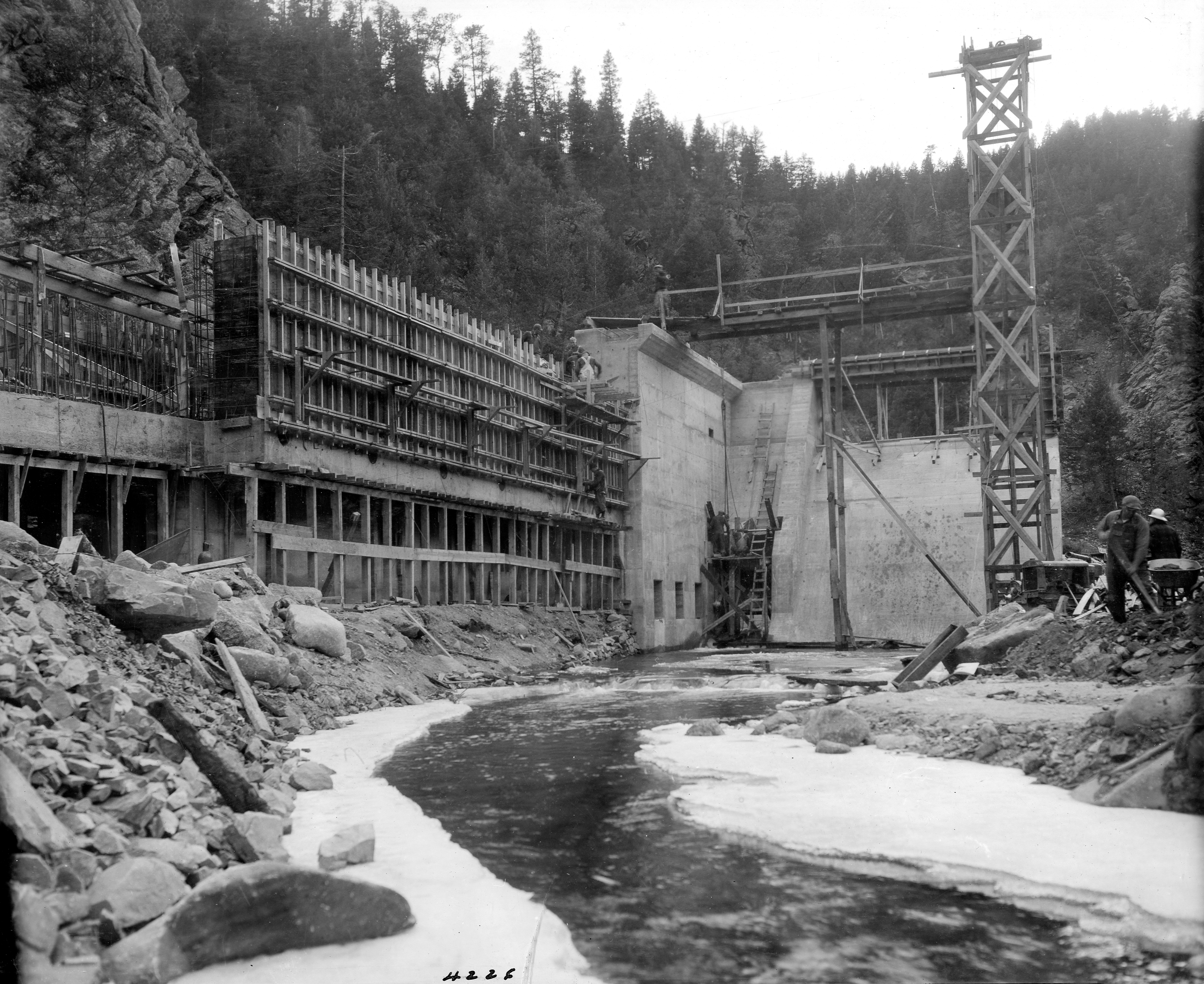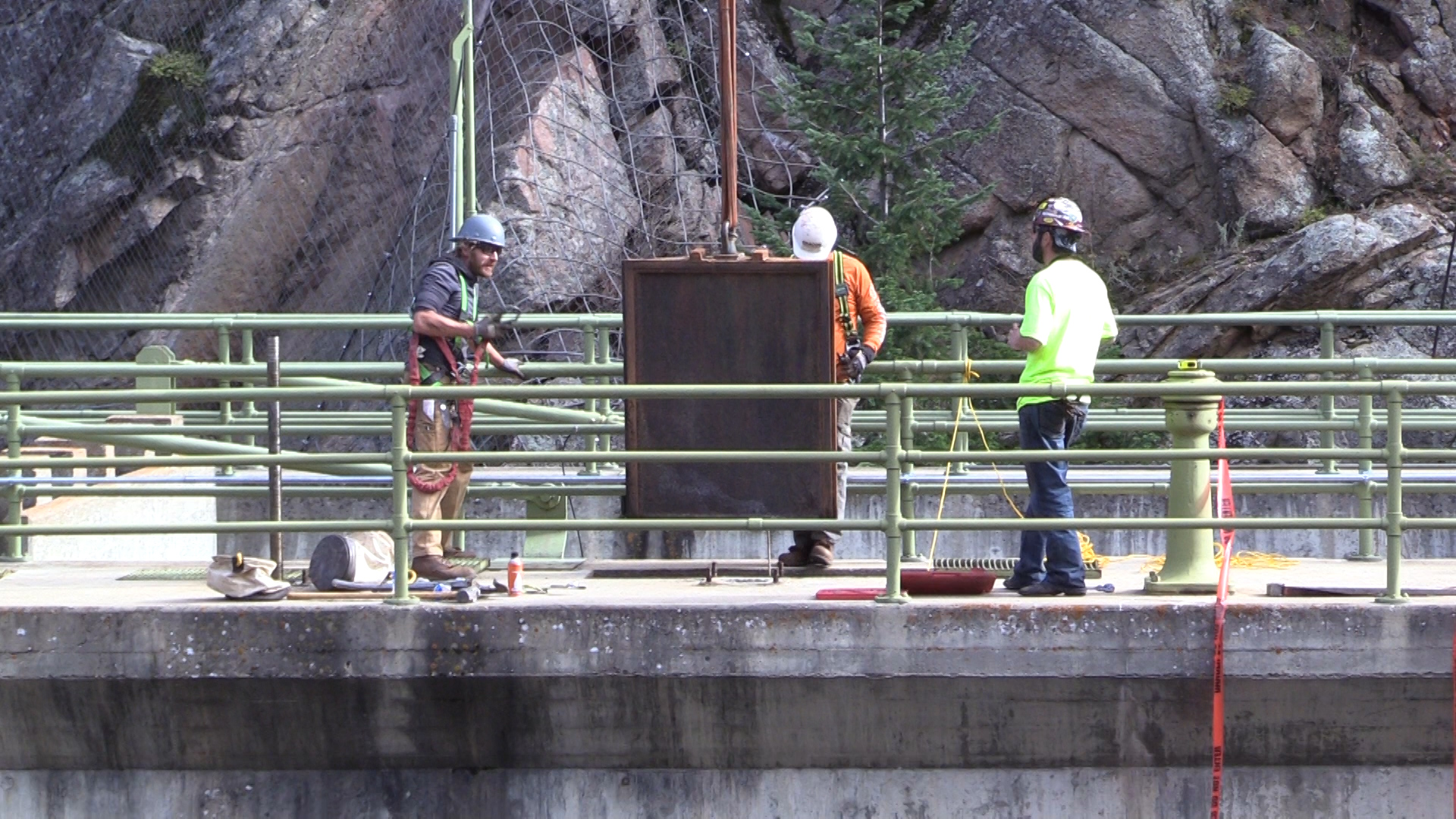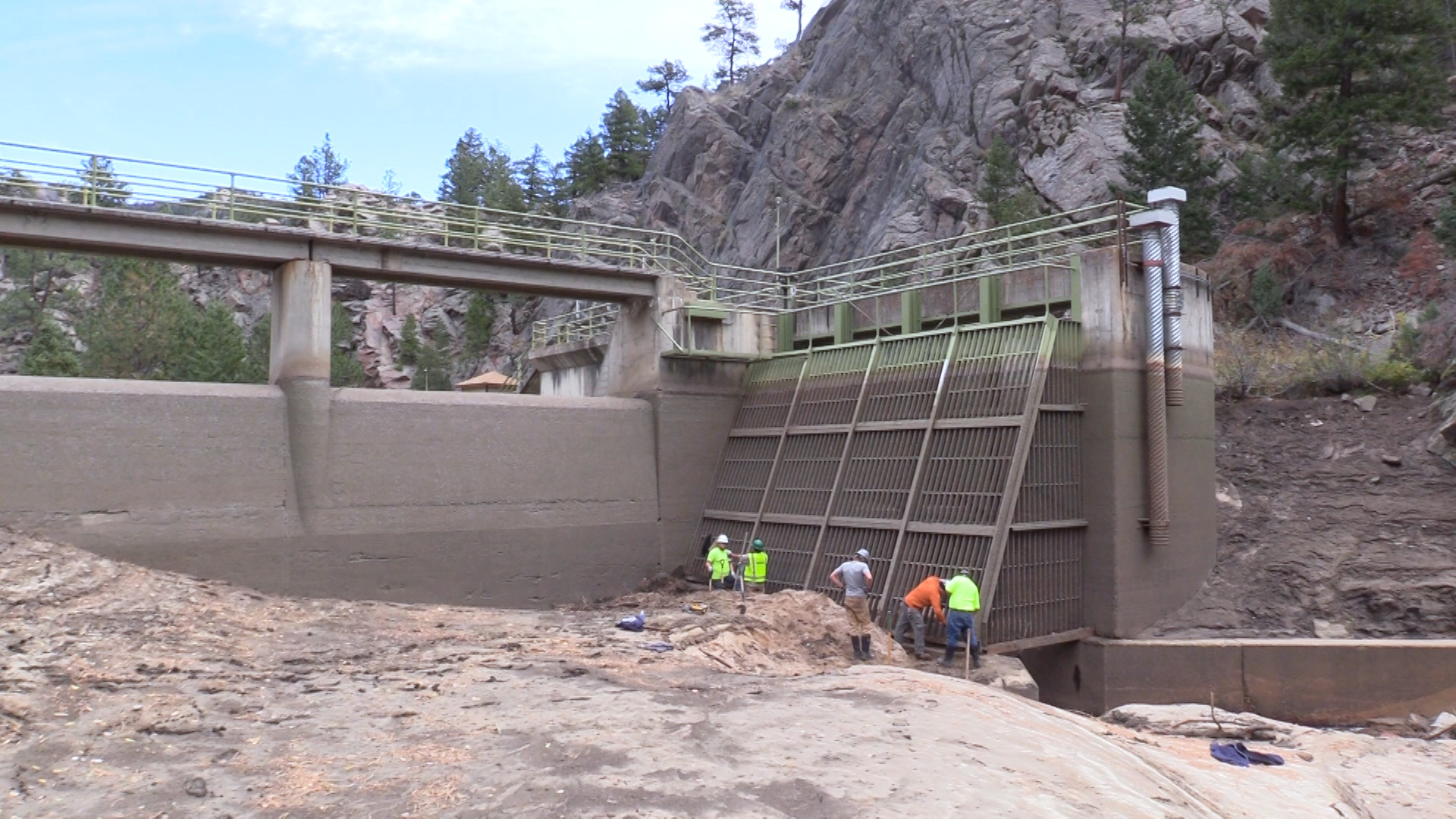
Modernizing an 80-year-old dam has its challenges
High in the hills of Eldorado Canyon southwest of Boulder, Denver Water’s South Boulder Creek Diversion Dam is getting a $1.9 million tune-up.
The improvement project, which began in late October, will make the dam easier to operate, provide a reliable source of power and protect against corrosion.
Denver Water completed the dam in 1937 as part of the northern delivery system, which channels water from the West Slope to the Front Range.
“The dam has held up remarkably well,” said Wes Eversole, Denver Water’s South Boulder district manager. “We’re doing preventative maintenance to make sure it runs smoothly for another 80 years.”
The purpose of the 35-foot-tall concrete dam is to channel water into the South Boulder Canal, which is used to fill Ralston Reservoir north of Golden.
The improvement work includes several projects, including restoring five gates on the dam that are used to regulate the flow of water into the canal and the creek.
Restoring the gates is a complex process. Three of the gates weigh 3,000 pounds and have to be lifted out with a crane to make the repairs. The other two gates will remain in place during the restoration work and get new rubber seals on the sides to prevent leaks.
“We’re going to strip the original protective coating and refurbish the gates with a new coating to protect them from corrosion,” said David Hughes, Denver Water project engineer. “If the gates aren’t maintained, corrosion could weaken them and cause them to fail.”
Another part of the improvement project involves hooking the dam up to electrical service. This will give the dam a permanent and reliable supply of power instead of having to use a generator.
Construction crews from Gracon LLC, are also replacing control devices that raise and lower the gates. In the past, dam operators had to adjust the gates with a hand wheel — a labor-intensive process.
The new mechanism will let allow Denver Water crews to electronically raise the gates, making the process of changing flows to the canal and creek more efficient.
Some of the renovations are the first needed since the dam was built.
“Designing the project presented its own challenges,” Hughes said. “We had to review construction documents from the 1930s and figure out how to upgrade the gates in the dam with modern technology and parts.”
The dam and South Boulder Canal play a significant role in Front Range water supply, as 20 percent of Denver Water’s drinking water passes through the canal. The water also supplies Arvada and North Table Mountain Water and Sanitation customers.
Before construction began, Denver Water developed a plan to make sure there is an adequate supply of water for customers during the six-month project.
The strategy involves turning the canal on and off and using Ralston Reservoir to store water when construction is underway and the canal is not running.
“We’ll have to send about 1.6 billion gallons of water down the canal three to four times during the project to keep Ralston full,” said Cindy Brady, water resource engineer at Denver Water. “It takes about two weeks to send enough water down the canal to fill the reservoir.”
Throughout the project, Denver Water also opens a gate on the bottom of the dam to maintain environmental flows of South Boulder Creek. Containment structures will be built around work areas to make sure there is no impact on the creek during construction work.
The project is expected to be completed at the end of April 2018.
“Coordinating water demand and construction is a balancing act we have to do up here,” Eversole said. “But this is all part of doing preventative maintenance to make sure this dam stays in good working order.”



